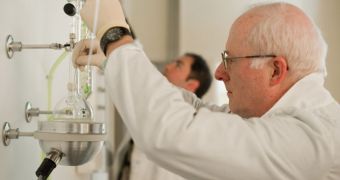investigators say that it may be possible to develop an entirely unique perspective on the evolution of life on this planet, if we just analyze the history of its building blocks.
Team leader Robert Root-Bernstein, a professor of physiology at MSU, believes that an entirely new field of paleontology may be hidden deep within the molecules permeating lifeforms that exist today.
He compares this new field of science with the way “standard” paleontology studies ancient life and fossils, whereas genetics traces the origins of genes back to common ancestors. Similarly, studying molecules could lead to a better understanding of the origins of lifeforms.
Root-Bernstein presented his proposal at the annual meeting of the American Association for the Advancement of Science (AAAS 2012), which was held in Vancouver, British Columbia, Canada.
He believes that the new form of paleontology could lead experts to a clearer understanding of the earliest stages of life, such as those found in prebiotic chemistry. Studies will be made increasingly complex by the fact that life on Earth is extremely old.
“By studying modules built from very simple chemicals, I’m hoping that it will lead to an understanding of a molecular paleontology in modern systems,” the team leader explains.
“Whether it’s a human or a bacterium, we’re all made from the same basic modules that have more than likely been around since the beginning of time,” he goes on to say. The work he proposes also has some practical applications.
For instance, research conducted on small glucose binding sequences – structures that appear on all peptides, enzymes and proteins, including insulin – could benefit attempts to find cures for diabetes.
“Albert Szent-Gyorgyi, the physiologist who discovered vitamin C, once defined discovery as seeing what everyone else sees and thinking what no one else thinks. I often find that phenomena that are obvious to other people are not obvious to me,” Root-Bernstein adds.
The area of research he pioneers is called molecular complementarity. The expert says that his knack for hunting patterns should come in very handy for this type of research.
“I hope to help answer how life evolved to take advantage of molecular complementarity so that the two concepts are virtually synonymous,” Root-Bernstein concludes.

 14 DAY TRIAL //
14 DAY TRIAL //